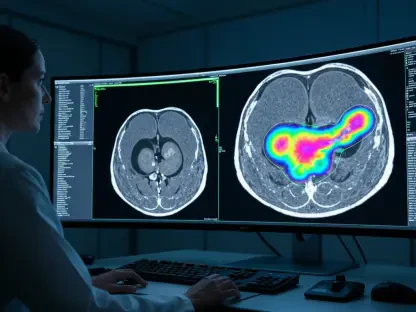GRObio, a spinout from the George Church Lab at Harvard University, has encountered significant hurdles lately. Founded in 2016, GRObio focuses on developing therapeutic proteins built on nonstandard amino acids (NSAAs). Despite its pioneering approach, the company is undergoing a period of restructuring and exploring strategic alternatives. These challenges come on the heels of GRObio securing substantial series B financing.
The Promise and the Present
Innovation and Initial Success
Emerging from the George Church Lab, GRObio carved a niche in synthetic biology by creating proteins using NSAAs. This technology aimed to deliver enhanced biologics with superior stability and targeted delivery potential. Their lead drug candidate, ProGly-Uricase, developed under the ProGly platform, was designed to improve gout treatments.
The company’s ability to raise over $90 million from prominent venture capital firms showcased initial investor confidence. This early financial support reflected the promising potential of GRObio’s innovative technology and its specific applications in therapeutic protein production. Investors like Atlas Venture, Access Biotechnology, Leaps by Bayer, Redmile Group, Digitalis Ventures, and Eric Schmidt’s Innovation Endeavors backed the company, believing in its vision and its technological advancements.
However, despite the apparent optimism, the road ahead for GRObio wasn’t without challenges. While the promise of their NSAA-based proteins held significant potential, the company soon encountered substantial hurdles that would test the robustness and resilience of their technological and strategic foundations.
Recent Setbacks and Restructuring
Despite the promising start, GRObio has hit a rough patch, leading to a reduction in research staff and the departure of key team members, evidenced by LinkedIn updates. Notable exits included co-founder Benjamin Stranges, Ph.D., and other founding executives, signaling significant internal changes. Their absence indicated a shift in company dynamics and a potential reconsideration of its strategic direction.
The recent restructuring efforts aim to navigate these turbulent waters and find a sustainable path forward. This situation arose shortly after GRObio’s successful series B funding, revealing an unexpected need for a strategic overhaul. The timing of these developments raised questions about the underlying issues driving the company to make such drastic changes shortly after securing substantial financing.
The departures of founding CEO Daniel Mandell, Ph.D., and Chief Scientific Officer Christopher Gregg, Ph.D., from the company’s leadership page further underscored the turbulence within the company’s executive tier. This scale of reorganization suggests deeper strategic challenges that GRObio must address to regain stability and reassure its investors.
Intellectual Property Conflicts
The Emergence of Pearl Bio
A critical challenge for GRObio is an intellectual property conflict with Pearl Bio, another spinout from the same lab. Pearl Bio has secured a crucial U.S. patent covering the use of GROs for creating proteins with synthetic chemistry, including NSAAs. This patent, described as “blocking IP,” puts GRObio in a precarious position.
This patent allows Pearl Bio significant leverage, as any company aiming to commercialize similar technologies must collaborate with or obtain licenses from Pearl. The timing of Pearl Bio’s patent, granted before GRObio’s latest funding round, raises questions about the due diligence conducted by investors. Such a key patent, exclusive to Pearl Bio, essentially limits GRObio’s ability to maneuver freely in the market without encountering significant legal and operational hurdles.
Pearl Bio’s Chief Operating Officer and Chief Business Officer, Amy Cayne Schwartz, emphasized the strategic advantage this patent offers, potentially creating a significant bottleneck for GRObio’s development and commercialization efforts. The existence of this “blocking IP” also signals a competitive edge for Pearl Bio, positioning it advantageously in the synthetic biology landscape.
Impact on Investor Confidence
Given the potential IP hurdles, investor support for GRObio stands on shaky ground. Although the company maintains that its broad IP portfolio protects its lead asset, the dominant patent held by Pearl Bio complicates their position. These conflicts highlight the importance of robust IP management in the biotech industry. The perceived vulnerabilities in GRObio’s IP strategy could deter further investment, compelling shareholders and potential backers to reconsider their engagement with the company.
Meanwhile, Pearl Bio’s limited funding did not seem to deter significant partnerships, such as their high-profile deal with Merck & Co., worth up to $1 billion. This contrast heightens the scrutiny on GRObio’s strategy and its IP-related challenges. Pearl Bio’s ability to secure major collaborations despite smaller funding rounds demonstrates not only their IP strength but also a strategic acumen in forging alliances that bolster their market position.
The disparity in outcomes between the two companies despite originating from the same foundational technology suggests that GRObio needs to reassess and potentially reframe its approach. Maintaining investor confidence amid such challenges will require GRObio to develop and communicate a clear, strategic plan that addresses both their technological promises and the IP landscape they navigate.
Strategy and the Path Forward
Exploring Strategic Alternatives
As GRObio continues to explore different avenues to overcome its current challenges, the focus remains on advancing its platform and lead asset. Potential strategies may include forming new partnerships, undergoing further restructuring, or seeking additional funding. Each path offers different risks and opportunities, necessitating a balanced approach to manage immediate needs while positioning the company for long-term success.
These explorations reflect the company’s determination to navigate its hurdles and ensure its pioneering technology reaches its intended market. GRObio’s resilience and adaptability will be crucial in maintaining momentum and securing a steady future in synthetic biology. While the road may be fraught with obstacles, strategic agility and clear leadership could pave the way for overcoming these setbacks.
Navigating a Complex Landscape
GRObio, a start-up emerging from the George Church Lab at Harvard University, has recently faced some substantial challenges. The company, which was launched in 2016, is dedicated to the creation of therapeutic proteins using nonstandard amino acids (NSAAs). This innovative approach sets them apart in the biotech industry. Despite their groundbreaking research and potential, GRObio is now in a phase of restructuring and is considering various strategic alternatives. These difficult times follow the company’s success in securing a significant series B funding round. The company’s commitment to pioneering advancements remains steadfast, but they must navigate through this period of transition and careful decision-making to move forward successfully. The combination of continued financial backing and strategic shifts suggests that GRObio is determined to overcome these challenges, refocusing its efforts to ensure both its survival and future growth in a highly competitive field.









